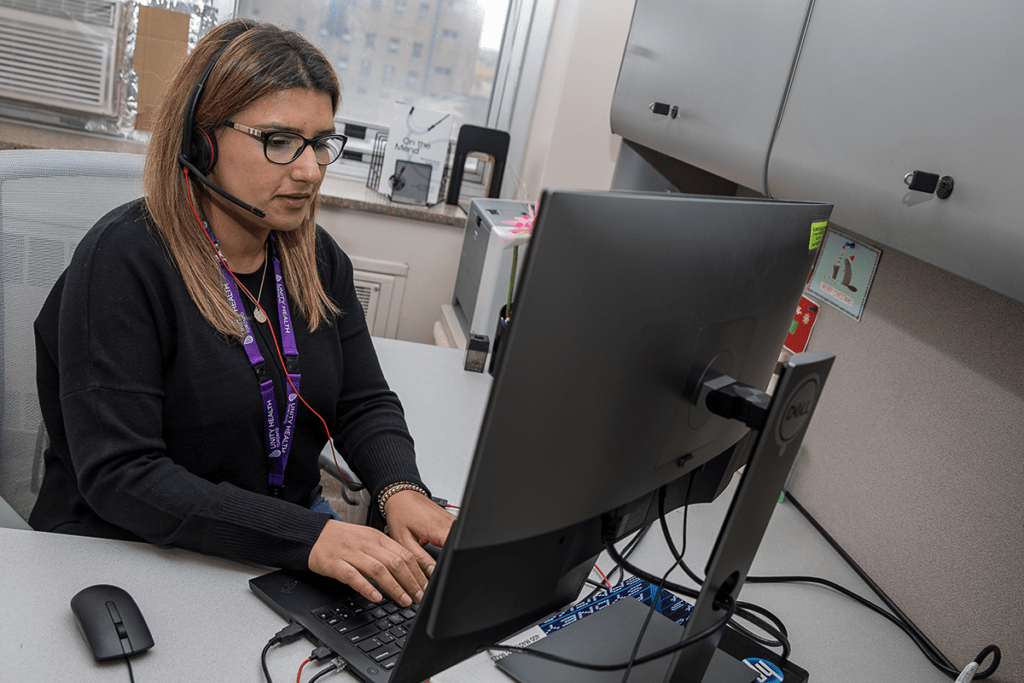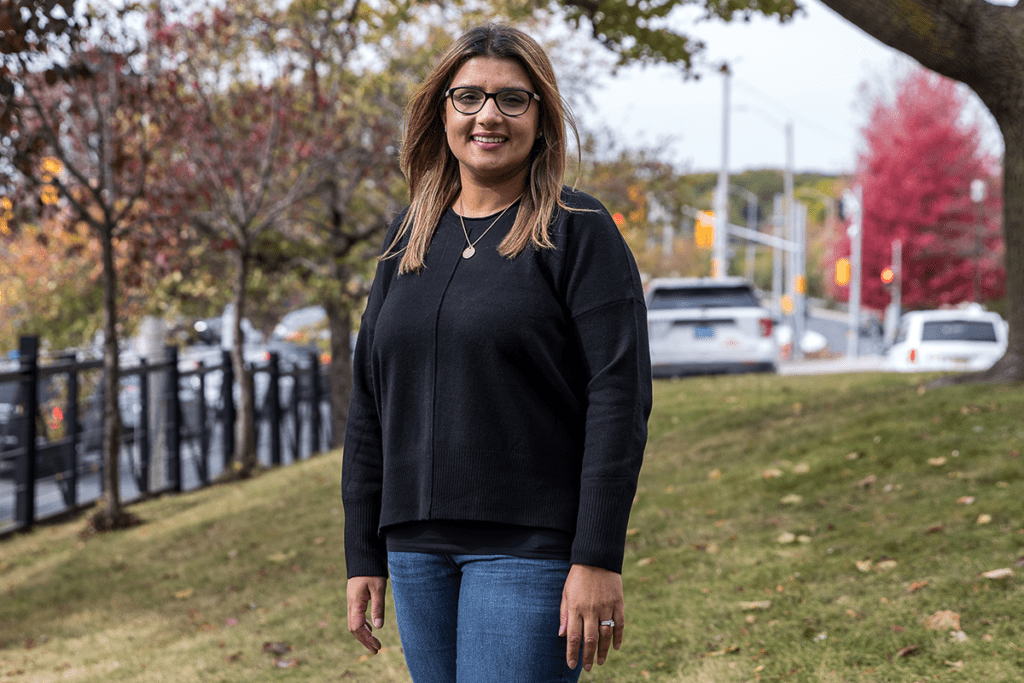How SCOPE is diverting patients from EDs and easing family physicians’ workloads

Nisha Benning
Sign up for the Unity Health Toronto newsletter, a monthly update on the latest news, stories, patient voices and research emailed directly to subscribers. If you haven’t subscribed yet, you can do that by clicking here.
With busy emergency departments (EDs) during respiratory illness season and the shortage of access to primary care in Ontario, family physicians can find themselves in tricky positions when patients come in needing referrals to specialty care.
There are two options, Dr. Nadine Laraya, a family physician in Toronto’s west end, explains. The first is to search through their networks and even the internet for a specialist, call around trying to connect with a specialist, then make a case as to why the referral should be accepted—a process that can take up to 45 minutes. The second option is to send the patient to the hospital for the ED to handle.
“Our days are so jam-packed,” says Laraya. So, when the former option is chosen, it can mean pushing appointments, skipping your lunch break and ending the day late. When the latter is chosen, while it saves the busy family doctor time, “it really clogs up the emerg.”
Neither option is ideal. That’s where Seamless Care Optimizing the Patient Experience, or SCOPE, comes into play.
SCOPE is a virtual program that provides family physicians with a single point of access to resources and system navigation. So, when they need to make a referral, they simply contact SCOPE’s nurse navigator, who is an expert on hospital and community programs and can quickly pinpoint where the patient can go to get the care they need in the timeliest manner.
Since SCOPE launched in 2012, 91 per cent of family physicians who are registered with the program said it has improved timing of consultations, and an estimated 82 per cent of calls that would have led to ED visits were diverted.
“I feel like we are a bridge,” says Nisha Benning, the SCOPE nurse navigator for West Toronto, based out of St. Joseph’s Health Centre. “Our health care system in Ontario is very complex and challenging, and it can be an administrative burden for primary care physicians. It is my main job to take that on for them.”
With administrative burden being cited as a key cause of record-level burnout among physicians, Laraya says having Benning on her side is “a win.”


“Things in the hospital are constantly changing,” says Laraya, who felt so strongly about SCOPE that she became the program’s primary care lead in West Toronto. “It’s helpful for us to have someone whose finger is on the pulse of all of that so we’re not learning the hard way in having to make multiple referrals in multiple places before we can get our patient to see someone.”
Dr. Laura Pripstein, a family physician who also uses SCOPE’s services, echoes Laraya’s sentiments.
“I love SCOPE,” she says. “I can’t imagine going back to working as a primary care physician without SCOPE.”
Pripstein, who works with Dorothy Wedel, the nurse navigator for Downtown East Toronto based out of St. Michael’s Hospital, says SCOPE has been especially helpful for aging patients, as her nurse navigator has a strong understanding of home and community care options, as well as under-housed patients.
“For my clients who are more street-involved, there’s stigma,” she says. Out of fear of judgement, some may even avoid getting help altogether, so decreasing the interactions needed to get the appropriate care through SCOPE “has been a game changer.”
“It’s such a wonderful feeling,” says Benning, knowing the impact she and her SCOPE colleagues are having on patients and the primary care providers who are registered with SCOPE. Thinking about how she diverts patients away from busy EDs and into the care they need, she adds, “It’s very rewarding.”
And while they’re all advocates for SCOPE, Benning, Pripstein and Laraya all have the same recommendation for its improvement: that SCOPE grows.
There are about 15,000 family physicians in Ontario, and just 2,681 of them are registered with SCOPE. Currently, through SCOPE’s nurse navigators, those registered have access to internal medicine, medical imaging and home and community care services. Mental health navigation is being implemented and explored in various regions.
“I hope they expand the specialty groups that are involved and add more numbers,” says Pripstein. “I think that would make things a lot better.”
By Kaitlin Jingco; Photos by Eduardo Lima
